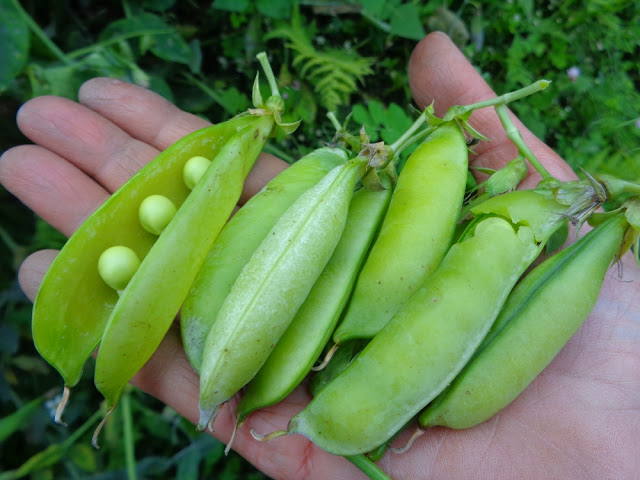 |
| A Lepcha meal- okra stir fry, greens peas cooked with their pods, onion leaves cooked with their flowers and fermented spinach soup called gundruk. |
 |
| Fermented soft cheese called churpi. |
You may like my post on 'Secret Life of the Shamans in Dzongu'.
 |
| Freshly harvested potatoes. |
 |
| Fresh green peas. |
 |
| Onion flowers which is a delicacy. |
 |
| Fresh ginger. |
At my Lingthem homestay, food was fresh from the farm to the
table. The host grew several vegetables such as spinach, potatoes, cabbage,
nettle fern, etc. Most days I accompanied her to the farm and we sowed ginger,
made the bed for potatoes, harvested potatoes, plucked nettle fern, and cleared
the weed around cardamom plants.
Cardamom cultivation was introduced in Dzongu in the early 1930's and towards the end of the century, Sikkim turned out to be a major exporter of cardamom.
You may like my blog post on Himachali/Pahadi cuisine.
Cardamom cultivation was introduced in Dzongu in the early 1930's and towards the end of the century, Sikkim turned out to be a major exporter of cardamom.
You may like my blog post on Himachali/Pahadi cuisine.
 |
| That's me clearing weeds around the cardamom plant. |
 |
| Fresh cardamom buds which will mature into pods. |
In the traditional Lepcha kitchen, the stove is a stone tripod and wood is used as fuel. In the three homes I visited I saw corn cobs hanging over the hearth and meat tied in cloth, hung to be dried.
These are some of the dishes I ate.
 |
| Traditional Lepcha kitchen. |
 |
| Corn cobs hanging above the hearth. |
The evening I arrived I was treated to ‘masyum ko dal’
(ricebean dal), nettle fern with churpi, and potato stir fry. All the dishes
were full of flavor and light on the stomach.
My first breakfast was buckwheat pancakes called ‘Khuri’
which are stuffed with either meat of vegetables. Mine was stuffed with
potatoes and cabbage served with soft ‘churpi’ (yak cheese) mixed with ‘lopsi’ (hog
plum) pickle made with ‘dalle’ (one of the hottest chillies).
 |
| ‘Masyum ko dal’ (ricebean dal), nettle fern with churpi, and potato stir fry. |
 |
| Buckwheat pancakes called ‘Khuri’ stuffed with potatoes and cabbage served with soft ‘churpi’ mixed with ‘lopsi’ pickle. |
 |
| Lopsi or hog plum pickle. |
 |
| Pickled chillies called dalle. |
 |
| Stir fried green peas along with their skin, onion stir fried with the leaves and flowers, okra subji, fermented spinach soup called ‘gundruk’ and hot rice. |
 |
| Fermented and dried spinach called 'gundruk'. |
 |
| Nettle fern. |
 |
| Nettle fern cooked with ‘churpi’, cauliflower subji, ‘lopsi’ pickle and masoor dal with rice. |
 |
| Thukpa. |
 |
| Thukpa at Nimtho |
 |
| Stinging nettle called bichhoo in Hindi. Contact of the skin with the leaves causes irritation so we plucked these with tongs. |
 |
| Kinema, spinach saag and daal. |
 |
| Momos ready to be devoured. |
Premit was a genius in the kitchen and thanks to her enthusiasm I could sample such a variety.
If you have enjoyed reading this post, you may subscribe to new posts updates via email. Enter your email id in the 'Follow by email' on the right hand side panel.




